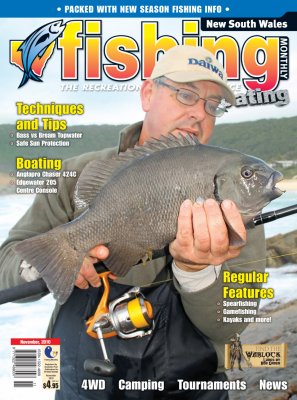Bass Vs Bream Topwater Tips by Jamie Robley
 At this time of year one of the most popular styles of fishing around the southeastern part of the country is casting surface lures to bream and bass.
At this time of year one of the most popular styles of fishing around the southeastern part of the country is casting surface lures to bream and bass.
Both species can provide us with plenty of exciting surface action, but as much as they love to smash something on the top, bream and bass can be moody and difficult to tempt at times.
These two fish share a number of behavioural traits, even though they are very different.
Both tend to hit surface lures more aggressively when the weather and water temperatures are warm and become hesitant about hitting surface lures if the temperatures suddenly fall, such as just after a southerly change or a few cooler rainy days.
Bass and bream are both also quite opportunistic feeders: they will eat a wide variety of food and adapt to whatever the environment throws at them.
If one food source suddenly becomes more abundant, such as a big insect hatch they may also focus more on that and will become disinterested in most other potential food items.
One week they may be willing to strike at almost anything we throw at them, then the following week we have to sift through the tackle box to find a lure they'll attack.
Apart from bream frequenting salt water and bass living in the fresh, the main difference between the two is that bass are easier to catch than the more wary bream.
BREAM
Through the warmer months one of the main sources of food for bream are prawns, closely followed by the smaller glass shrimp.
Even if they are munching away on an oyster or sifting through the silt looking for worms or muscles, if a prawn pops out in front of them, bream are very much inclined to attack it.
The majority of our surface lures are roughly the equivalent of a prawn or shrimp to a bream.
Regardless of exactly which type of surface lure you're using, I always tell people to try and forget that it's a lure on the end of the line and attempt to make your offering behave as much like a real live prawn as possible.
If you look at the way a prawn behaves when being chased down by a determined bream, it won't just half-heartedly plop along in a dead straight line at the same pace. A frightened prawn will jump around in different directions and move as fast as possible, occasionally stopping dead still.